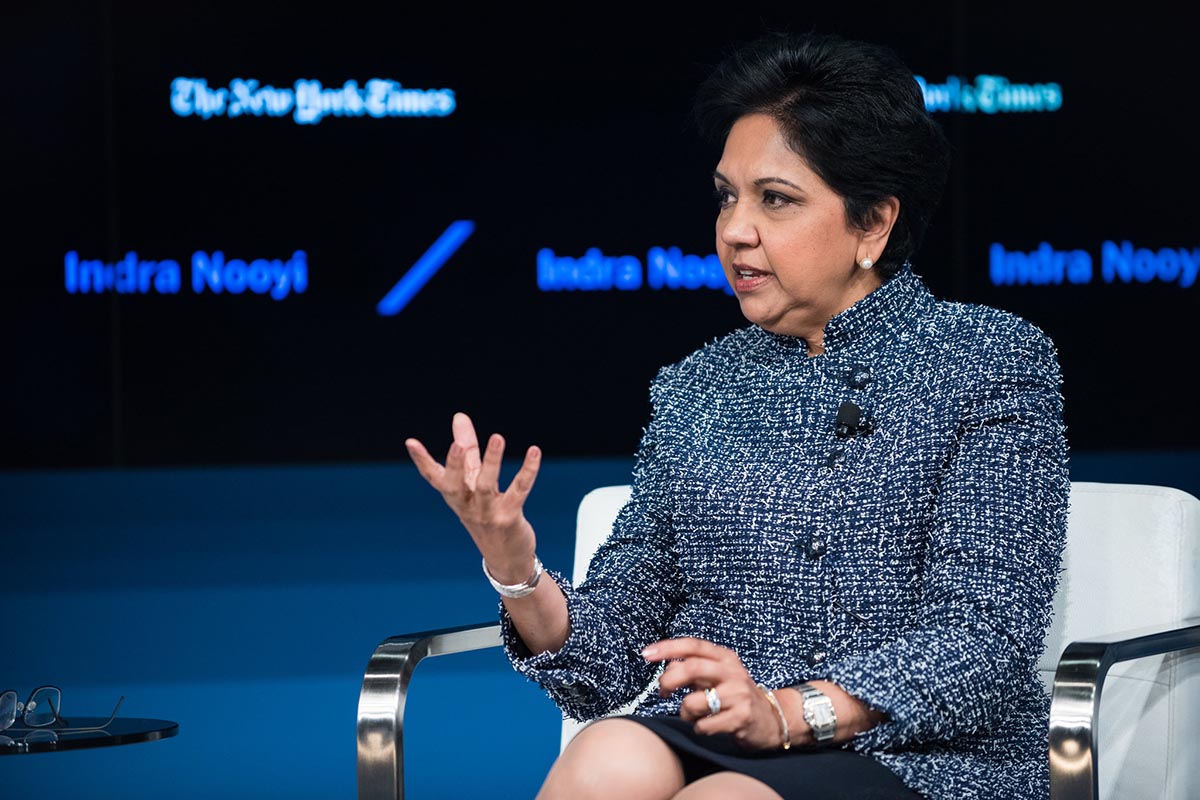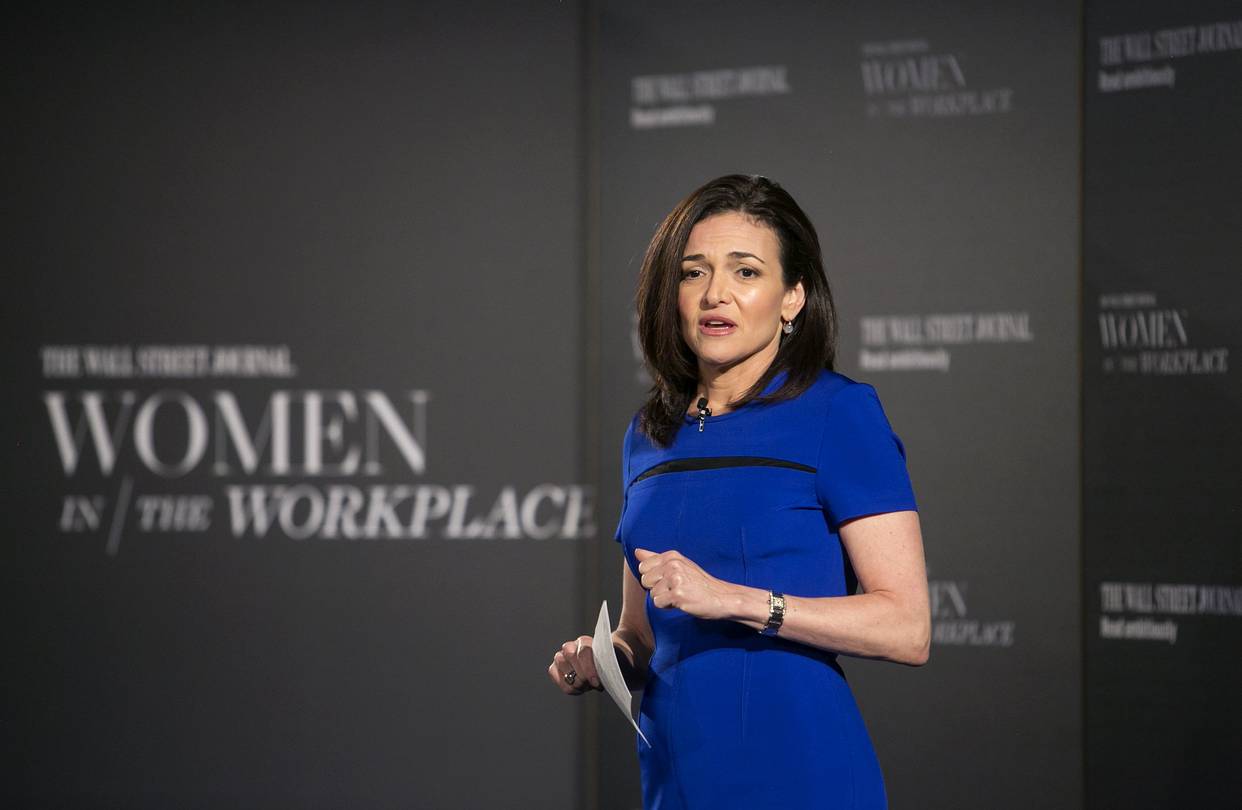Why We Need More Female Leaders
We’re living in a world where women are not realizing their potential. There are not enough female leaders across the globe right now, and there are not enough female leaders in the workplace while fights are happening to strive for more equity and equality between men and women in leadership positions.
Not enough is done to ensure that women know they have a shot to be the best. Women and men are often raised differently and in this generation today. Parents are fighting for more equity for their daughters.
We need more female leaders, whether in the form of a small business start-up program for women or in bigger and more critical situations.
The only way that women can realize their potential is to understand why we need more female leaders in the first place. Let’s look at some points below that will explain exactly that.
It’s All About The Future
It can be daunting for women who have never been in a leadership position to imagine themselves in a high-profile role. Not only are stigmas attached to those roles, but there is a constant inner belief that we are not good enough. Of course, that belief has been borne by a patriarchal structure and what society has to say about women, but we need to push the younger generations to strive to break down those barriers rather than keep them in place. Women in leadership positions should look at other women with a hand out to pull them up the ladder, not imagine themselves squashing them along the way.
The Rise of Women in Space Exploration
The landscape of space exploration is witnessing a significant and transformative shift with the increasing prominence of women. This evolution transcends mere representation; it highlights the invaluable contributions and unique perspectives female leaders bring to this challenging field.
At the forefront of this change is Kelly Gerardy, whose journey from aspiring astronaut to a key figure in space exploration is a source of immense inspiration. Her experiences and the challenges she overcame are eloquently narrated in her book, “Not Necessarily Rocket Science: A Beginner’s Guide to Life in the Space Age.”
This personal account is a guide to becoming an astronaut and a testament to the power of perseverance and resilience.
View this post on Instagram
Alongside Kelly Gerardy, numerous other women from around the globe are making significant strides in space exploration. These modern female astronauts represent various international space programs, each contributing to the global endeavor of space exploration:
Jessica Meir (USA): An astronaut with NASA, Meir has participated in expeditions to the International Space Station (ISS), contributing to important research and spacewalks. Her work has been pivotal in advancing our understanding of living in space.
Christina Koch (USA): Known for her record-breaking longest single spaceflight by a woman, Koch’s missions have provided valuable data on the effects of long-duration spaceflight on the human body, crucial for future deep space missions.
Wang Yaping (China): As part of the Chinese space program, Wang was the second Chinese woman to fly in space. Her missions have been instrumental in advancing China’s presence in space exploration.
Samantha Cristoforetti (Italy): Representing the European Space Agency (ESA), Cristoforetti has been involved in long-duration missions aboard the ISS, conducting various scientific experiments that contribute to life and physical sciences research.
Anousheh Ansari (Iranian-American): Known for being the first female private space explorer, Ansari’s journey to the ISS was a significant milestone, inspiring countless women globally to pursue their dreams in space exploration.
Kelly Gerardy’s recent achievements with Virgin Galactic, where she participated in a groundbreaking flight, further exemplify the expanding role of women in both governmental and commercial space sectors. Her involvement in commercial space travel is not just a personal achievement but a beacon of the broader impact of women in this field.
The stories of these women, along with Kelly Gerardy’s narrative, highlight the need for diverse leadership in space exploration. Their journeys, from overcoming challenges to becoming key figures in their respective space programs, serve as powerful examples of why the contributions of determined and visionary women are essential for the continued growth and success of space exploration. These women are not just astronauts; they are trailblazers, reshaping the narrative of space travel and inspiring future generations to reach for the stars.
Transformational Ideas Will Become The Norm

Women often have a transformational leadership style, which has been shown to build social and personal identification among others. Meta-analysis comparing male and female leaders has always shown that female leaders were more transformational in their actions. There is more contingent reward behavior compared to the two-dimensional actions presented by male leadership figures. This will have a better and more apparent positive influence on an organization and its success.
Research has consistently shown that women leaders exhibit higher levels of transformational behaviors than their male counterparts. This includes more instances of contingent reward behavior, where leaders provide specific feedback and rewards for meeting agreed-upon objectives. Such an approach enhances team performance and contributes to a positive organizational culture.
Furthermore, women’s transformational leadership often involves inclusive decision-making, encouraging diverse perspectives, and collaborative problem-solving. This inclusive approach empowers team members and drives innovation by harnessing a range of ideas and viewpoints. By valuing each team member’s contribution, female leaders can create a sense of belonging and commitment within their teams.
In addition to these aspects, female leaders often demonstrate high emotional intelligence, which is crucial in understanding and managing their own and others’ emotions. This emotional insight enables them to navigate complex interpersonal dynamics effectively, foster a supportive work environment, and constructively resolve conflicts.
Indra Nooyi, former CEO of PepsiCo, is a stellar example of transformational female leadership. Her tenure was marked by the groundbreaking “Performance with Purpose” initiative, which balanced financial success with social responsibility.
Nooyi reoriented PepsiCo towards healthier products, demonstrating foresight in market trends and innovation. She also cultivated an inclusive and diverse corporate culture, emphasizing employee empowerment and collaboration. Known for her emotional intelligence, Nooyi connected personally with employees, enhancing workplace morale and commitment. Her leadership style transformed PepsiCo’s strategy and culture and set a benchmark in combining business acumen with empathy and societal impact.
Teamwork Is Greatly Enhanced
Women like to work in teams and pull ideas around the table rather than work alone. We can make bolder and wiser decisions as leaders, making the team environment more of a cooperative family feel than an authoritative one. This will boost teamwork in general and implement a new culture within the business that shows that passion and enthusiasm are the leaders’ and not just their ability to be commanding.
People Will Respond To Women
We listen to our mothers and our teachers, and we listen to nurses, all of which are traditionally female roles. People respond to women in a positive way, which means that we demonstrate superior Leadership values. The world has to change somehow, and more female leaders are the way to go for that to happen.
Diverse Perspectives Drive Innovation

Diverse perspectives undeniably drive innovation, and history is replete with examples of breakthroughs achieved by collaborating with individuals from various backgrounds. Consider the story of Rosalind Franklin, whose groundbreaking work in X-ray crystallography played a pivotal role in deciphering the structure of DNA.
Her contributions and those of James Watson and Francis Crick led to the Nobel Prize in Physiology or Medicine in 1962. In the business world, Indra Nooyi, the former CEO of PepsiCo, demonstrated the power of diverse perspectives in driving innovation.
Nooyi’s leadership focused on expanding the company’s product portfolio to include healthier options, recognizing the shifting consumer preferences towards wellness. Under her tenure, PepsiCo successfully acquired brands like Tropicana and Quaker Oats, transforming the company into a global leader in the health and wellness sector.
These examples underscore how diverse perspectives, whether stemming from gender, race, or background, have consistently catalyzed innovative thinking, pushing the boundaries of human knowledge and achievement.
Improved Decision-Making
Research has consistently shown that diverse teams make better decisions. Gender-diverse leadership teams tend to consider a wider range of factors and potential consequences, reducing the risk of groupthink and cognitive bias. By having more female leaders, organizations can tap into the collective wisdom of their workforce, resulting in more thoughtful and well-rounded decision-making.
Enhanced Organizational Performance

Enhanced organizational performance is a tangible outcome of having more female leaders at the helm of businesses and institutions. Numerous studies have substantiated the correlation between gender diversity in leadership and improved financial results. Take, for instance, Mary Barra, the CEO of General Motors.
Under her leadership, the company has thrived, consistently reporting solid financial performance. Barra’s commitment to innovation and sustainability has guided General Motors into the era of electric vehicles, positioning the company as an industry leader in this transformative sector. Similarly, Ginni Rometty, the former CEO of IBM, spearheaded the company’s shift towards cloud computing, artificial intelligence, and data analytics, rejuvenating IBM’s growth prospects.
In the financial sector, Jane Fraser made history by becoming the first woman to lead a major Wall Street bank as the CEO of Citigroup. Her strategic vision and digital banking emphasis have positioned Citigroup for sustained growth. These examples underscore the significant impact that female leaders can have on an organization’s bottom line.
Moreover, studies from McKinsey and other research institutions consistently show that companies with more women in leadership roles tend to outperform their peers in terms of profitability and shareholder value. The relationship between gender diversity and enhanced organizational performance is not coincidental but rather a reflection of the diverse skills, perspectives, and talents that women bring to the table, driving innovation and fostering a culture of success.
Reflecting the Demographics of Society
A diverse leadership team is essential for organizations that aim to resonate with and serve a diverse customer base. In many societies, women constitute a significant portion of the population and hold significant purchasing power. Having female leaders can help organizations better understand and connect with their female customer base, leading to more effective marketing strategies and customer satisfaction.
Breaking Stereotypes and Inspiring Future Generations

Breaking stereotypes and inspiring future generations is pivotal to having more female leaders in various fields. When women shatter the glass ceiling and assume leadership roles traditionally dominated by men, it challenges deeply ingrained gender stereotypes and sends a powerful message to aspiring young women.
Consider the remarkable achievements of Kamala Harris, who made history as the first female, first Black, and first Asian-American Vice President of the United States. Her election shattered long-held assumptions about who can ascend to the highest levels of political power. Harris is a role model for countless young girls, demonstrating that leadership knows no gender or racial boundaries.
In technology and entrepreneurship, figures like Sheryl Sandberg, the COO of Facebook, have been instrumental in advocating for gender equality and empowering women in the workplace. Sandberg’s best-selling book, “Lean In,” sparked a global conversation about women’s ambition and leadership and encouraged women to pursue their career aspirations without reservation. Similarly, Melinda Gates, through her philanthropic work and leadership of the Bill & Melinda Gates Foundation, has transformed global health and education and exemplified the immense impact women leaders can have in addressing critical societal issues.
These women and countless others serve as living proof that gender should never be a barrier to leadership and that young women can aspire to any role they choose. Their stories of success, resilience, and empowerment inspire future generations to dream big, break down barriers, and become the leaders of tomorrow, contributing to a more inclusive and equitable world where limitless possibilities for all replace stereotypes.
Legal and Ethical Imperative
Many countries have implemented laws and regulations that mandate gender diversity on corporate boards and in government. These measures recognize the importance of female representation in leadership roles and the need to address historical gender disparities. Complying with these legal requirements fosters a more equitable society and protects organizations from legal and reputational risks.
Promoting Inclusivity and Equity

Promoting inclusivity and equity is an inherent trait of many female leaders, and their influence in this regard extends beyond their immediate organizations and into the broader societal landscape. Women in leadership often prioritize initiatives that address pay gaps, support work-life balance, and foster diversity and inclusion within their organizations.
Ursula von der Leyen, the President of the European Commission, has championed gender equality and pledged to close the gender pay gap within the European Union during her tenure. She has also strongly advocated for increased representation of women in leadership positions across the EU institutions.
In the corporate sphere, Beth Ford, the CEO of Land O’Lakes, is a vocal advocate for diversity and inclusion. Under her leadership, Land O’Lakes has implemented initiatives to support women in the workforce and promote diversity, including mentorship programs and leadership development initiatives. Additionally, Ford is a proponent of LGBT+ rights and inclusion.
In the entertainment world, Oprah Winfrey has been a trailblazer in promoting inclusivity and equity through her media empire and philanthropic efforts. Her groundbreaking talk show addressed various social issues, including race, gender, and sexuality, sparking meaningful conversations and inspiring societal change.
These examples highlight how female leaders often leverage their positions to drive meaningful progress in promoting inclusivity and equity. Their commitment to addressing societal inequities benefits their organizations and has a ripple effect, fostering a more equitable and just society for all. Female leaders serve as powerful catalysts for change, setting an example for future generations and demonstrating that leadership can be a force for positive transformation on a global scale.
The Impact of Transgender Women Leaders
The evolving landscape of leadership is increasingly enriched by the contributions of transgender women, who are breaking barriers and redefining traditional norms. These leaders bring unique perspectives shaped by their journeys, advocating for inclusivity and diversity in various sectors.
Indya Moore, a prominent model and activist, stands out as a powerful example. Known for their role in “Pose,” Moore’s activism extends beyond the entertainment industry, focusing on transgender rights and racial equality. They are a beacon of hope and empowerment, using their public platform to advocate for the transgender community, especially transgender people of color.
Joining Moore in this transformative leadership are several other notable transgender women:
Laverne Cox: An acclaimed actress and LGBTQ+ advocate, Cox became the first openly transgender person nominated for a Primetime Emmy Award. Her advocacy work and visibility in the entertainment industry have made her influential in the fight for transgender rights.
Jazz Jennings: As one of the youngest publicly documented people to be identified as transgender, Jennings is an advocate for transgender youth. Her openness about her transition and experiences has helped increase awareness and understanding of transgender issues.
Caitlyn Jenner: A former Olympic gold medalist, Jenner’s very public transition brought widespread attention to transgender issues. Her journey has been influential in bringing transgender narratives to a broader audience.
Geena Rocero: A Filipino-American supermodel and advocate, Rocero came out as transgender during a TED Talk, which became a viral sensation. She has since used her platform to promote transgender visibility and rights.
The leadership of these transgender women is crucial in today’s world. They represent a movement towards a more inclusive society where diverse voices are heard and valued.
Their influence challenges stereotypes and paves the way for future generations, demonstrating that diversity strengthens leadership. The impact of transgender women in leadership positions is profound, signifying progress in societal attitudes and a step toward greater equality and understanding
Adaptability in a Changing World
In an era of rapid technological advancements and evolving societal norms, adaptability is a key leadership trait. Women have demonstrated their ability to adapt to change and embrace new challenges effectively. Female leaders can help organizations navigate uncertainties and disruptions while maintaining resilience and forward-thinking strategies.
Conclusion
The need for more female leaders is not just a matter of social justice but a strategic imperative. Diverse leadership teams drive innovation, improve decision-making, enhance organizational performance, and connect with an increasingly diverse customer base. Additionally, the presence of female leaders inspires future generations and fosters a more inclusive and equitable society. Embracing gender diversity in leadership roles is not only the right thing to do; it’s a path to a brighter, more prosperous future for organizations and society.




















